Kevin M. Schultz, assistant professor of history and Catholic studies at the University of Illinois at Chicago, demonstrates in his newly published study, Tri-Faith America (Oxford University Press, 2011), that the central drama of twentieth-century American religion was a tense, complex and successful course of change that ultimately led to mutual accommodation between America’s religious traditions. Schultz follows the lead of Will Herberg (1901-1977) that was popularized in his famous book, Protestant, Catholic and Jew: An Essay in American Religious Sociology (1955). Herberg, who was brought up in a secular Jewish family and became a communist, eventually turned away from Marxism and became a religious conservative. During the 1960s Herberg became the religion editor of the National Review, the conservative magazine begun by William F., Buckley (1925-2008), a devout Catholics. (I prize a small signed photo of Buckley, taken with me outside Edman Chapel at Wheaton College, when we met at a event to honor and study Malcolm Muggeridge.)
In Herberg’s most famous aforementioned work, Protestant, Catholic, Jew, he created a sociological framework for the study of religion in the United States by demonstrating how immigration and the resulting multi-ethnic culture of America were profoundly reflected in our religious movements and institutions. This thesis has stood the test of time and thus Herberg’s book is still very important for the study of the social impact of American religion in the twentieth century.
In Kevin Schultz’s new book he goes where Will Herberg did in his famous book but Schultz develops the Herberg thesis further. He does so with rich subtlety and profoundly engaging insight. He balances the achievements of our religious changes, with what he calls ‘tri-faith America,’ against its weaknesses and liabilities. This balanced perspective prompts Wilfred McClay, one of my favorite current religion writers, to say that Schultz has attained a balance that is rare, showing both the strengths and weaknesses of this new social arrangement.
If you’ve been awake you’ve surely noticed that the social and religious complexity of America has rather profoundly changed in a little more than one generation. The ways in which these changes have taken place are recognized by very few non-scholars, especially conservative Christians and ministers who continue to appeal to donors and listeners for a return to a culture that hasn’t exited for more than seventy-five year! Sadly, the results of this continuing social shift are missed by most evangelical writers who address culture and religion in America. This leaves the rest of us unable to make sense of what is actually happening to our common social and religious life. Frequent appeals are thus made for “taking back America” or “changing our godless culture.” These have been a part of our steady diet since the 1970s. But too few have stopped to realize that these conservative appeals arose only a decade after the Civil Rights movement had reached its greatest achievements. Why? Is this all part of a larger story our Christian leaders have missed? I think so.
Kevin Schultz puts the history of American religion at the center of our political and social history and specifically shows the true origins of our American version of religious pluralism. America was a Protestant nation. Make no mistake about this historical truth. But this idea was clearly abandoned in the twentieth century. What replaced it was a new national image premised on the idea of three separate, equally American faiths—Protestantism, Catholicism and Judaism. By pressing their own versions of pluralism both Catholics and Jews changed everything from college fraternity life to our understanding of social etiquette, neighborhoods, the armed forces and what should or should not happen in public education. This altered our entire political and social landscape in ways that profoundly massively changed our lives by the early twenty-first century. These fundamental changes, according to Schultz, began in the early 1900s and led to the accomplishments of the Civil Rights movement in the 1960s. Through these changes Catholics and Jews forced America to change by confronting the new reality of religious pluralism.
President Franklin D. Roosevelt put the real story of America bluntly, if privately, in 1942. The president noted that the United States was "a Protestant country and Catholics and Jews are here under sufferance." This is fact. Everything else is religious and social mythmaking done by people who have an agenda of some sort or another.
I give you one simple point to demonstrate my point. By the time the Religious Right arose in the 1970s conservatives like Jerry Falwell (1933-2007) were talking about a “moral majority.” This loose-knit coalition consisted of Protestants, Catholics and Jews. He spoke, as did others in the movement, of a Judeo-Christian America. What he, and almost all those in the movement, never told you was that a Judeo-Christian America was a myth in terms of our century-plus of history. There simply wasn’t a Judeo-Christian America until the rise of religious pluralism (brought about by immigration and massive social change) in the twentieth century. Falwell, and his friends and followers, urged us to take back the country of our forefathers but their appeal was not even remotely close to historical reality. The early twentieth century had already begun to see great change in American religion and the Religious Right seemed tone deaf and oblivious to this reality.
Tomorrow: Putting America’s Religious Change into Perspective
Related Posts
Comments
Comments are closed.
My Latest Book!

Use Promo code UNITY for 40% discount!




This is great stuff, John.